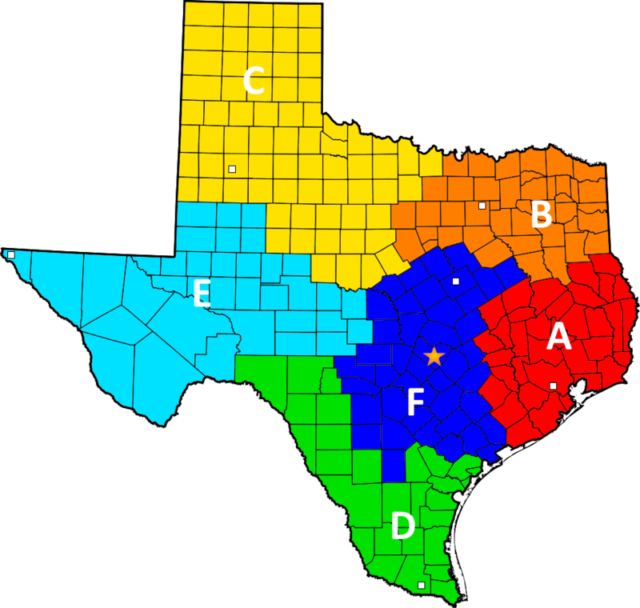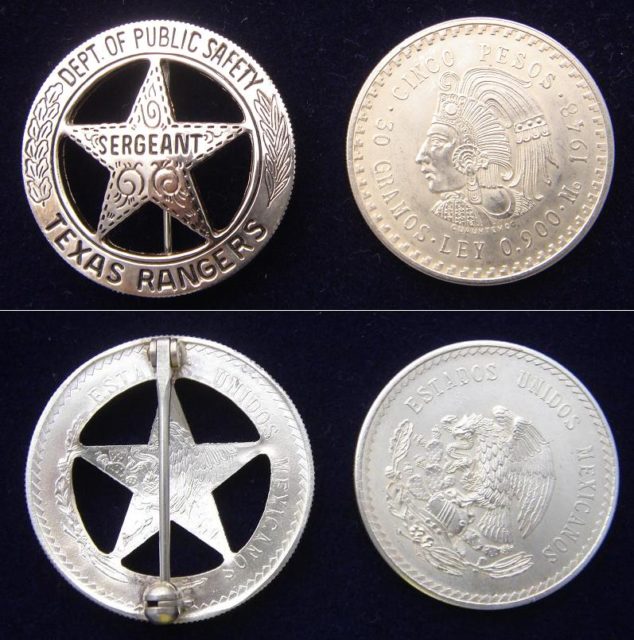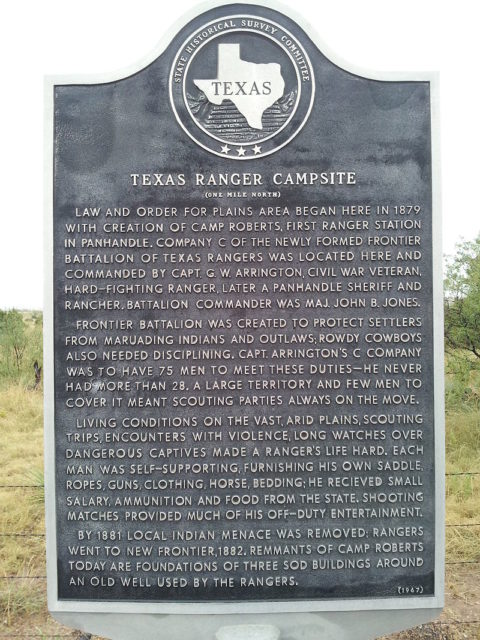The Texas Ranger Division was initially founded in 1823 by Stephen F. Austin. Austin was a native of Virginia who was elected to the Legislature of Missouri in 1813 and remained in that position until 1819.
Austin’s father had received a land grant after Texas had declared independence from Mexico. Not long after moving to Texas, the elder Austin died and left his land to his son, Stephen. From that time on, Stephen Austin dedicated his life to the progress of Texas.

The new Republic of Texas was attempting to attract new settlers to the area, but with no official peacekeepers for the settlers living so close to the Mexican border and Indian Territory, something had to be put in place. Established in 1835, the Texas Rangers, with Robert McAlpin Williamson as the first Major, grew to more than 300 men within the next several years.
After the creation of the Republic of Texas, the second elected president of the Republic, Mirabeau B. Lamar, gathered together 56 Rangers to fight the Cherokee in retaliation for the support they had given the Mexicans during the Cordova Rebellion in 1838. About 10 Rangers were killed in the Battle of Stone Houses in 1837, 10 miles south of present day Windthorst, Texas. The Rangers were increased from 56 to 150 men by Governor Sam Houston, who succeeded Lamar in 1841. The Rangers continued to clash with Native Americans through to 1846, when Texas became the 28th state of the United States of America.

The Rangers became a legend in the Old West and, as with many Western myths, the press that exaggerated their exploits helped establish the Rangers’ reputation. The group’s numbers decreased after 1848, but the gubernatorial election of Hardin Richard Runnels in 1857 brought $70,000 in funding to the Rangers, now led by Mexican War veteran John Salmon “Rip” Ford.
The newly refreshed Rangers mounted crusades against the Indians, who by now were regularly attacking settlements.
In 1858, the Rangers repelled the Comanche Indians in the Battle of Little Robe Creek and defeated Juan Cortina, who commandeered the town of Brownsville, Texas, in Cortina’s War a year later. With the coming of the Civil War in 1861, Texas joined the Confederacy, and the Rangers parted ways, with many volunteering to serve in the Confederate Army.

In 1874, the Texas Rangers were reintroduced by Governor Richard Coke. He authorized the creation of six companies of 75 men each, to be placed in strategic towns around Texas. They would have increased authority, including jurisdiction throughout the entire state, Texas Department of Public Safety reported.
An account of a boxing match, written by Bigelow Paine and published in Paine’s 1909 book Captain Bill McDonald: Texas Ranger, became the origin of the Ranger’s motto, “One Riot, One Ranger”.
The phrase was coined in 1896, by Ranger Captain William “Bill” McDonald in Dallas, where he had been sent to prevent the illegal heavyweight prize fight between Bob Fitzsimmons and Pete Maher. The story says the Mayor met McDonald’s trainer and asked where the other Rangers were. McDonald replied, “Hell, ain’t I enough? There’s only one prizefight!”

Actually, not only were “Hanging” Judge Roy Bean and Bat Masterson in attendance, but nearly every Ranger and Captain, and even Adjutant General Woodford H. Mabry had shown up at the match.
No one was sure if the fight should go on, but the Governor’s order was that the fight was illegal and so it was canceled. Eventually, the fight was held near Langtry, on the Mexican side of the border.

The Rangers were present as security in El Paso, at the summit of President William Howard Taft and Mexican President Porfirio Díaz in 1909 and prevented the assassination of both leaders. Given the lawlessness near the Mexican border, it was the responsibility of the Rangers to preserve law and order at any cost.
Hundreds of new Rangers were hired by the state with no regard for their background. Many of the new Rangers took advantage of their positions of power and freely brutalized Mexicans. On January 13, 1918, Rangers slaughtered 15 Mexican men age 16 to 72 in Porvenir, Texas. An inquiry by the Texas Legislature revealed that Rangers were responsible for the deaths of between 300 to 5,000 people, primarily Hispanics, from 1910 to 1919.

The number of Rangers was reduced to 45 during the Great Depression. Former Ranger Captain Frank Hamer returned to duty in 1934, at the behest of the head of the Texas prison system, Col. Lee Simmons, to track down Clyde Barrow and Bonnie Parker. Barrow had recently escaped from the Eastham Prison Farm in Houston County after killing a guard. On May 23, former Rangers Hamer and B. M. “Manny” Gault, along with local law enforcement, ambushed Bonnie and Clyde and opened fire on their car. Over 130 rounds were discharged, killing the legendary duo on the spot.

After having supported Governor Ross Sterling’s re-election campaign in 1933, the Rangers were disbanded by Miriam Amanda “Ma” Ferguson when she took office. Consultants who were hired to reorganize the state security agencies advised combining the Rangers with the Texas Highway Patrol, creating a new agency, The Texas Department of Public Safety. The merger took place in 1935 with a budget of $450,000. With minor adjustments, the 1935 reforms have been in effect regarding the hiring of new members by examinations and merit evaluations, as well as offering promotion based on seniority and performance in the line of duty.
Read another story from us: Ned Kelly – The most famous Australian Bush Ranger
Currently, the Texas Rangers’ historical significance as the oldest law enforcement agency with statewide jurisdiction in all of North America protects the group from being disbanded.
